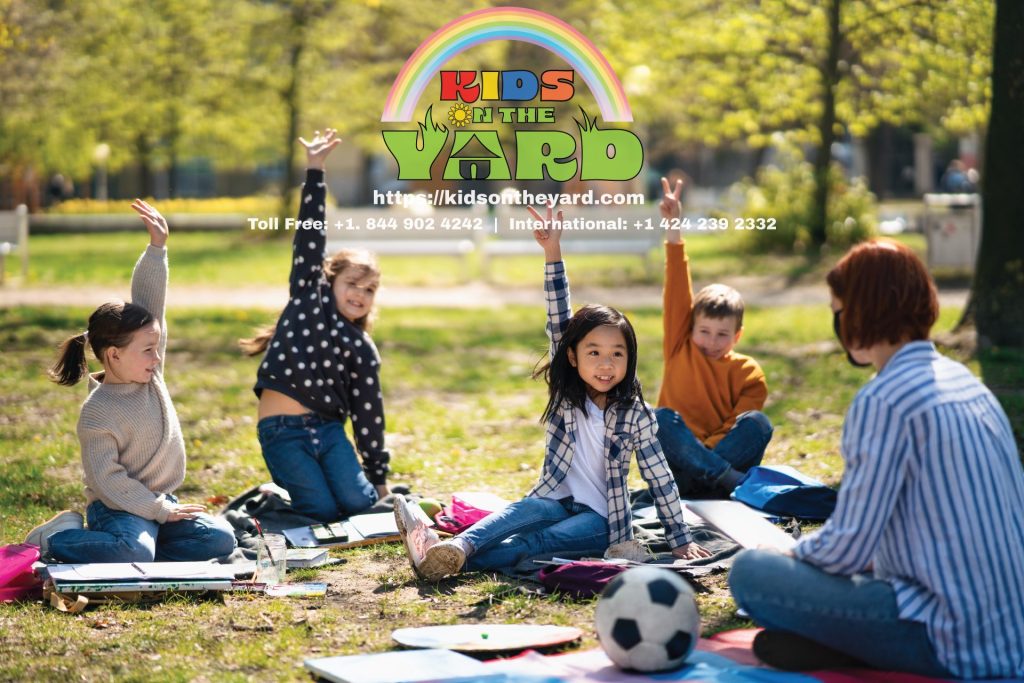|
Audio Article
|
Physical activity plays a significant role in enhancing physical and cognitive development in children. From boosting memory to improving academic performance, the benefits are expansive. Understanding how different types of exercises impact the brain can help create effective routines that support overall growth.
Physical Activity and Cognitive Function
Regular exercise doesn’t just build strong muscles; it also gives a powerful boost to the brain. When a child engages in physical activity, several brain-enhancing processes spring into action:
- Increased oxygen saturation
- Stimulation of angiogenesis
- Enhanced memory and focus
The hippocampus, crucial for memory, becomes well-supplied with oxygen and nutrients, enhancing its ability to process and store information. The prefrontal cortex, which handles tasks like decision-making and problem-solving, becomes sharper and more efficient with regular physical activity.
Types of physical activity matter:
- Aerobic exercises (e.g., running, swimming)
- Complex motor skill exercises (e.g., balancing, ball games)
- Structured physical activities (e.g., PE classes)
Hillman et al. discovered that just 20 minutes of walking can improve brain activity and academic performance.1 Budde et al. found that structured PE sessions help kids stay focused and on task, contributing to better academic outcomes.2
When kids play games like “Follow the Leader” or partake in active classroom breaks, they aren’t just burning off energy; they’re fine-tuning their brains. Regularly switching between sitting and moving can enhance their cognitive abilities. Therefore, it’s not just about being active; it’s about engaging in physical activities that challenge both body and mind.
Impact of Physical Activity on Academic Performance
The evidence linking physical activity to improved scholastic outcomes is compelling. Numerous studies have shown that children who are more physically active tend to perform better in school. For instance, Koutsandréou et al. demonstrated that children who engaged in motor skill activities saw improvements in concentration and attention tasks.3
Key factors influencing academic performance:
- Intensity and duration of physical activity
- Complexity of exercises
- Qualifications of activity leaders
- Consistency of physical activity programs
Aerobic exercises, such as brisk walking and dancing, are particularly impactful. Hillman et al. found that just 20 minutes of walking led to increased brain activity, better response accuracy, and improved academic test performance.1
However, the evidence isn’t entirely one-sided. While many studies have found positive correlations between physical activity and academic performance, others show no significant difference or even negative correlations. The nuances lie in the type and quality of the exercise, as well as how it’s delivered.
"Consistent physical activity over a school year positively affected students' readiness and academic success." – Veraksa et al.4
It’s essential to consider the individual characteristics of students. Not all children respond to physical activity in the same way. Factors such as baseline fitness levels, engagement, and enjoyment can modulate how much they benefit academically. This variability reinforces the need for personalized and adaptable physical education programs.
Types of Physical Activities and Their Benefits
Cardio-respiratory activities and motor skill activities each offer unique benefits to cognitive functions and academic performance in children. Understanding these differences helps us adjust physical activities to maximize their positive impacts.
| Activity Type | Examples | Benefits |
|---|---|---|
| Cardio-respiratory | Walking, running, swimming, dancing | Increased oxygen flow, enhanced brain function and alertness |
| Motor skill | Bouncing a basketball, balancing, playing “Simon Says” | Improved coordination, decision-making, and information processing |
| Structured PE | Combination of cardio and motor skill activities | Better attention, concentration, and academic performance |
Hillman et al. found that just 20 minutes of walking significantly enhanced brain activity and academic achievement.1 This boost helps with memory retention, attention, and problem-solving skills.
Koutsandreou et al. demonstrated that motor skill activities could lead to significant improvements in working memory and verbal learning.3 These activities fine-tune the brain’s ability to process complex information and make quick decisions.
The ideal approach: Integrate a mix of cardio-respiratory and motor skill activities to ensure that physical education contributes meaningfully to holistic development. It’s about nurturing children’s brains to work better, think faster, and remember more while keeping them physically fit.
We can help kids unlock their full potential by keeping them active. Physical activity is not an extracurricular sideline—it’s a critical component of education.
School-Based Physical Activity Interventions
School-based physical activity programs play a crucial role in shaping students’ overall well-being and academic success. These activities, ranging from physical education classes to extracurricular sports and recess, contribute to cognitive, emotional, and social development.
Regular physical activity positively impacts classroom behavior. Watson et al. found that it helps reduce restlessness, allowing students to focus better when they return to their desks.1 Simple activities like “Brain Breaks,” where students engage in short bursts of movement, can refresh their minds and prepare them for the next learning segment.
Physical activities also boost self-esteem. When children master new skills, their confidence grows, translating into greater self-belief in academics and social interactions. This improved self-worth can have far-reaching effects on various aspects of their lives.
Cognitive function benefits substantially from physical activity. Veraksa et al. highlighted that consistent, structured physical activity is linked to enhanced academic readiness and success.2 Programs that blend aerobic and motor skills have been shown to improve executive functions like:
- Working memory
- Cognitive flexibility
- Inhibitory control
The effectiveness of these programs relies significantly on the competencies of the teachers and specialists leading them. Professionals with expertise in both physical education and cognitive development can create engaging, developmentally appropriate activities that maximize benefits for all students.
School-based physical activities also enhance social skills. Team-based activities help children develop communication and cooperation skills, building a foundation for positive social interactions and relationships.
“With the right leadership and structure, these programs become a cornerstone for well-rounded education, preparing children for academic success and a healthy, active life.”
In summary, school-based physical activity programs offer multifaceted benefits, improving classroom behavior, boosting self-esteem, enhancing cognitive function, and fostering social skills.
Physical Activity, Executive Function, and Academic Readiness
Physical fitness is not just about maintaining a healthy body; it’s also crucial for developing a well-functioning brain, particularly in terms of executive function skills. These skills, which include managing time and attention, planning, organizing, and juggling multiple tasks, are essential for academic success.
Physical activities that demand high levels of coordination and control can be particularly effective in boosting executive function. Koutsandreou et al. revealed that games involving rules, sequences, and timing – like Simon Says or organized sports – require children to pay close attention, remember instructions, and adapt quickly.3 Such structured play sharpens cognitive skills while keeping children physically active.
Regular physical activity enhances various aspects of executive function:
- Attention control: Activities requiring sustained focus and quick responses, like tag or circuit training, can improve attention spans.
- Working memory: Games that involve recalling patterns or sequences strengthen this skill. Activities like jumping jacks while reciting spelling words combine physical and mental exercises effectively.
- Cognitive flexibility: Team sports or games with changing rules enhance adaptability and creative thinking.
The correlation between executive function skills and academic readiness is significant. Children with strong executive function skills can better manage their time, stay organized, and tackle challenging tasks, giving them an advantage in the classroom. This readiness contributes to higher engagement in learning activities, improved behavior, and better academic performance.
Veraksa et al. emphasized that consistent physical activity positively affects students’ academic readiness and success.2 Regularly integrated physical activity programs can nurture these executive function skills, paving the way for children to excel academically.
In conclusion, the interplay between physical fitness and executive function is a powerful force for academic readiness and success. By integrating physical activities that promote attention control, working memory, and cognitive flexibility, we can set children on a solid path to educational achievement. Encouraging regular, structured exercise helps children develop sharper minds and healthier bodies, preparing them for future academic challenges.

How does physical activity benefit cognitive function in children?
Physical activity increases oxygen flow to the brain, stimulates angiogenesis (formation of new blood vessels), and enhances memory and focus. It directly benefits brain areas like the hippocampus (responsible for memory) and the prefrontal cortex (responsible for decision-making and problem-solving).
What types of exercises are most beneficial for children’s cognitive development?
Different types of exercises offer varied cognitive benefits:
Aerobic exercises (e.g., running, swimming) enhance brain function by increasing oxygen flow.
Motor skill exercises (e.g., balancing, ball games) improve coordination, decision-making, and information processing.
Structured physical activities (e.g., PE classes) support attention, concentration, and academic performance through aerobic and motor skill activities.
Can physical activity improve academic performance?
Yes, many studies suggest that physical activity positively impacts academic performance. For example, research by Hillman et al. found that just 20 minutes of walking can improve brain activity and test scores. Physical activity helps with memory retention, attention, and problem-solving skills, which can contribute to better academic outcomes.
Are all types of physical activities equally effective for improving academic performance?
Not all activities have the same impact. Aerobic exercises boost brain activity, while motor skill activities enhance working memory and verbal learning. The effectiveness also depends on the duration, intensity, and consistency of the exercise, as well as the quality of the programs and the expertise of activity leaders.
Why do some studies show no improvement or negative effects of physical activity on academic performance?
Outcomes can vary depending on several factors, including the type and quality of the exercises, individual differences in children’s baseline fitness levels, and how much they enjoy and engage in the activities. This variation suggests that personalized and adaptable physical education programs may be necessary.
How do school-based physical activity programs support children’s cognitive and social development?
School-based physical activities, such as PE classes and recess, contribute to cognitive, emotional, and social development by:
Reducing restlessness and improving focus when children return to class.
Boosting self-esteem through skill mastery.
Enhancing executive functions like working memory, cognitive flexibility, and inhibitory control.
What is the role of physical activity in improving executive function?
Activities that demand coordination and control, such as games with rules or organized sports, help children develop attention control, working memory, and cognitive flexibility. These skills are critical for managing time, organizing tasks, and handling complex problems, which are essential for academic success.
What are some examples of physical activities that can boost executive function?
Games like “Simon Says,” team sports, or activities with changing rules can enhance cognitive flexibility and attention control. Simple activities like tag, circuit training, or jumping jacks while reciting spelling words combine physical exertion with mental engagement, benefiting attention spans and working memory.
How should physical activities be integrated into school routines to maximize benefits?
Combining structured PE sessions with short active breaks, like “Brain Breaks,” can refresh students’ minds and improve their readiness to learn. Incorporating aerobic exercises and motor skill activities into daily routines can ensure a balanced approach, promoting physical fitness and cognitive growth.
Why is the role of teachers and specialists important in school-based physical activity programs?
Professionals with expertise in physical education and cognitive development can create engaging and age-appropriate activities. This ensures that children not only enjoy physical activities but also gain cognitive and social benefits, making the programs more effective in enhancing academic readiness.


